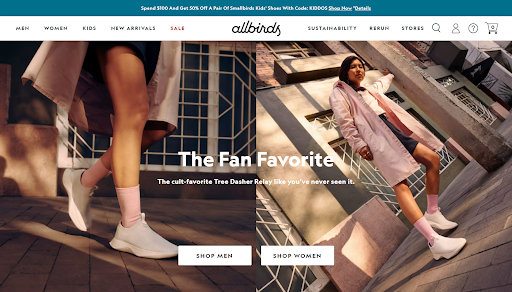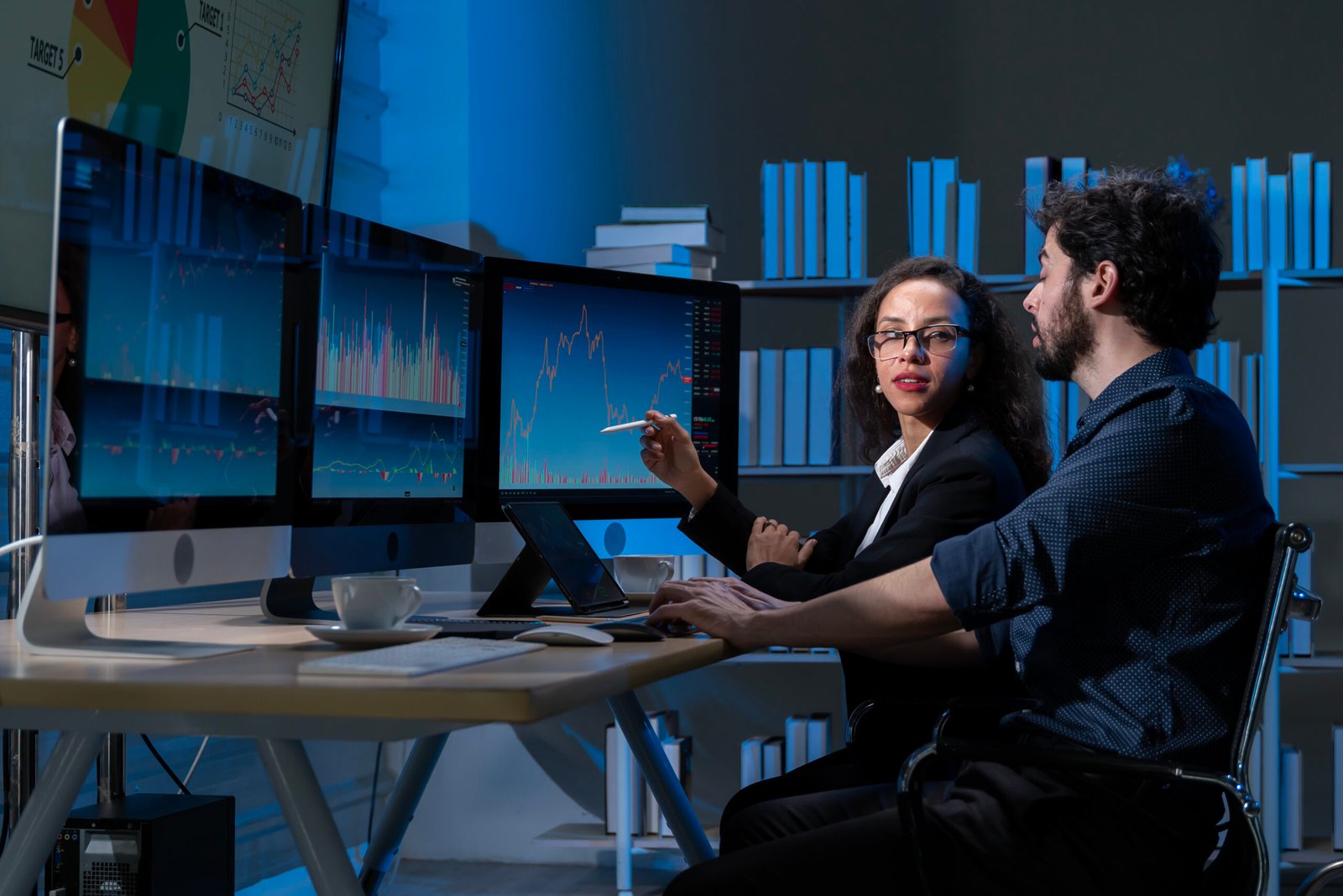Others
Mobile First? Try ‘Charlotte First’: Designing for a City That’s Always Scrolling

We’ve heard it for years: “mobile-first design.” But in 2025, the mobile-first mantra feels like the web version of saying “don’t forget your jacket” in a July heatwave—necessary, sure — but also kind of obvious. What’s not immediately apparent is how local culture influences user behavior, including scrolling, clicking, and bouncing. And that’s why website design in Charlotte deserves its spotlight.
Charlotte’s not just another metro in the Southeast. It’s an economic engine, a fintech magnet, and a lifestyle powerhouse all wrapped into one — and yes, it’s got opinions about your website. Designing for Charlotte users isn’t just about responsiveness; it’s about attitude, speed, simplicity, and the subtle charm of digital Southern hospitality. So if your site loads like molasses or looks like it belongs to a used car dealership in 2007, this is your sign.
This isn’t just mobile-first. This is Charlotte-first. Welcome to the UX expectations of a city that’s always on the go.
From Bankers to Brewers — Charlotte’s Digital Demographic
What makes website design in Charlotte so different? The answer is somewhere between a Wells Fargo tower and a South End beer garden.
Charlotte’s population is a beautiful contradiction: polished professionals by day, laid-back adventure-seekers by night. The city’s tech-savvy, on-the-go crowd doesn’t have patience for slow-loading pages or bloated design. At the same time, they want more than minimalism. They want elegance without arrogance. That means your site better be both stylish and subtle, optimized for performance and personality.
The growing fintech sector expects a frictionless user experience. The local food and retail boom demands visual appeal. And nearly everyone — from Gen Z students at UNC Charlotte to real estate agents hopping between showings — is experiencing your brand for the first time on a phone screen. That’s the pressure cooker where website design must prove its worth.
In this city, bad web design is like showing up to a rooftop bar in Crocs — you won’t get kicked out, but everyone will remember.
Mobile-First Is the Minimum — Here Comes Context-Aware Design
Let’s get something straight: website design in Charlotte is not about screen size. It’s about situational awareness.
Take lunchtime downtown. Thousands of professionals are ordering lunch, checking Slack, texting their spouse, and sneakily browsing your site — all in the same five-minute window. Your design has to get that. Every scroll, every tap, every second of load time either pulls them in or pushes them out. This isn’t UX in a vacuum — it’s UX in the wild.
In Charlotte, website visitors are on the move. They’re switching devices. They’re dodging potholes while reading your About page. You have milliseconds to impress and micro-interactions to nail. Static layouts are toast. Adaptive, anticipatory design is the secret sauce.
This is why Above Bits doesn’t just design sites for devices — we design for moments. Whether someone is on a scooter in NoDa or multitasking during their kid’s soccer practice in Ballantyne, the website has to work. Not just technically — emotionally.
The Hallmarks of a Charlotte-First Website Design

If you’re targeting local users and hoping to be more than a flash-in-the-pan startup, website design in Charlotte needs to include the following non-negotiables:
- Speed that screams: You’ve got three seconds — maybe less. Local competition loads faster than a pit crew at a NASCAR race.
- Refined branding: Fonts and colors matter here. Loud neon and chaotic layouts scream “template from 2012.”
- Clever use of space: Charlotte users like clean, purposeful designs — not endless scrolls or cluttered info dumps.
- Local flavor: Whether it’s copy, photography, or even icons, a nod to the Queen City vibe adds personality to your site.
- Conversion-aware layouts: Every button, contact form, and CTA requires a clear purpose. Charlotte users don’t tap out of politeness.
Charlotte web design isn’t about reinventing the wheel — it’s about not flattening the tires while you’re at it.
Custom Beats Cookie-Cutter, Every Time
Let’s talk real-world pain: too many businesses come to us saying, “We hired someone who installed a theme and said it was done.” Guess what? In website design in Charlotte, that just doesn’t cut it anymore.
People here recognize a cookie-cutter site when they see one. It’s the digital equivalent of microwaved queso — fast, but bland and weirdly sad. Your website is your brand’s handshake. It should feel deliberate, tailored, alive, and not copied from a template shop’s demo page.
Charlotte’s most successful brands — from boutique gyms to artisan bakeries to six-figure law firms — share one trait: a design that reflects them, not a theme found in a marketplace in Eastern Europe.
When you build custom, you build trust. When you build local, you build loyalty. When you build both, people click, scroll, and, most importantly, return.
Real UX Happens When Charlotte Stops Thinking
The paradox of good design? It disappears. That’s the golden rule in website design in Charlotte — especially in a city where people are juggling work, family, side hustles, and more open browser tabs than they’ll ever admit.
Your site shouldn’t make people think. It should make them feel confident. Confident in your product, your brand, your reliability. And that confidence is built on frictionless UX, meaningful content, and intuitive design, not on autoplay videos, five pop-ups, or an impossible-to-find phone number.
We’ve seen it firsthand: when a site “just works,” users stay longer, trust faster, and convert better. That’s not just theory — it’s data from dozens of Charlotte projects we’ve launched, re-launched, and fixed after others broke them.
So yes, mobile-first is a must. But Charlotte-first? That’s the secret most agencies are still trying to catch up to.
Lessons from the Streets — Charlotte Projects That Set the Bar
We’ve built websites across the country, but the ones that make us sweat in the best way are the ones for local businesses right here in Charlotte. Why? Because the bar is high and rising. We’re not talking about just making things look nice. We’re talking about designing for real users with high expectations and short attention spans.
Take the redesign we did for a boutique wellness center in Dilworth. Their old site was technically “mobile responsive,” but it didn’t feel responsive to how their customers lived. Appointment booking was clunky. Contact forms were buried. Mobile load time made iced lattes melt before the page finished rendering.
We rebuilt the site from scratch — featuring custom layouts, fast-loading modules, and a UX flow that allows a user to book a session in under 30 seconds. Conversion rates went up. Bounce rates dropped. People started complimenting the business… on their website. That’s Charlotte’s thinking in action.
And that’s just one story. We’ve done this for realtors in SouthPark, small retailers in Plaza Midwood, and even a local startup that needed an entire visual identity and web presence launched in two weeks. No fluff. No templates. Just clear, effective, and context-aware design built to thrive in Charlotte’s unique digital ecosystem.
Charlotte UX Expectations vs Generic Mobile-First Design
You might think good UX is universal. And sure — fast sites, clear buttons, and clean layouts matter everywhere. However, here’s the reality: website design in Charlotte follows its logic, shaped by a fast-paced economy, a culture of quality, and users who expect convenience wrapped in style.
Let’s break down the difference between designing for Charlotte and just following a mobile-first checklist:
| Design Element | Mobile-First (Generic) | Charlotte-First |
| Speed Expectations | Under 5 seconds | Under 2 seconds, or users bounce |
| Navigation | Hamburger menus and dropdowns | Clear, thumb-friendly, with strong internal links |
| Aesthetic Approach | Flat design with stock icons | Layered design, branded visuals, subtle animation |
| Content Placement | Top-down flow with calls-to-action at the end | Immediate value proposition, CTA within first view |
| Local Identity | None or generalized | Location-based cues, language, and neighborhood flair |
| Trust Signals | Generic testimonials, badges | Real customer stories, Charlotte community signals |
| Conversion Focus | One-size-fits-all funnels | Adaptive paths for local users and returning visitors |
What works for a startup in San Diego might fall flat in Uptown Charlotte. Designing for this city means going beyond checklists and tapping into local behavior. It’s not just mobile-first — it’s relevance-first.
You Can’t Out-Design Misalignment
No matter how slick your visuals are, no matter how clever your CSS transitions, if your site doesn’t align with the way real people in Charlotte think, scroll, and engage — it’s dead weight. And the most brutal truth? You won’t know it until they quietly ghost your site and call your competitor.
This is the pitfall we often see: out-of-town agencies or quick-fix freelancers applying generic logic to a city that thrives on nuance and subtlety. They build flashy landing pages that scream “convert now!” — forgetting that Charlotte users tend to investigate, compare, and make decisions based on subtle impressions of credibility.
Design misalignment can appear in unexpected places. Maybe it’s a homepage that feels too pushy. Or product pages that require you to dig for shipping information. Or a layout that was trendy last year in LA, but now feels forced in North Carolina. And when users sense that dissonance, they’re out. No angry emails. Just an empty analytics report.
The fix? Design that respects the Charlotte mindset. One that values polish over pressure, clarity over clutter, and always meets the user halfway.
Don’t Just Fit In — Fit Charlotte
There’s a temptation in web design to aim for “universal.” A layout that works for everyone. A style that offends no one. But here’s the secret: great design doesn’t just avoid being bad — it leans into being relevant mainly when you’re designing for a place as specific and fast-moving as Charlotte.
Your site isn’t just a container of content. It’s a performance. A storefront. A 24/7 elevator pitch. And when you treat it that way, everything changes. You stop asking, “Will this layout work on mobile?” and start asking, “Will this design make sense to a 32-year-old remote worker sipping coffee on Camden Road while comparing my business to five others?”
Generic web design may get you launched. However, website design in Charlotte helps you get noticed, trusted, and remembered. It’s not a trend. It’s a strategy. And the businesses that understand that are the ones that grow — not because they went viral, but because they stayed relevant, intentional, and tuned in to their audience.
The Last Scroll — Time to Think Charlotte-First
If your website feels more like a digital brochure and less like a living, breathing asset… It’s time to reevaluate. Charlotte is a city full of users who scroll fast, judge silently, and click with purpose. They don’t wait for design to catch up — they move on.
At Above Bits, we don’t just build sites — we create digital experiences tailored to the city we’ve served for nearly two decades. From sleek portfolios to robust ecommerce builds, we’ve helped Charlotte businesses stand out with designs that move people, not just pixels.
Want your site to resonate with your local audience? Stop thinking “mobile-first.” Start thinking Charlotte-first.
Visit us at abovebits.com and let’s build something people want to scroll through.
Others
Top Enterprise Data Platforms and Tools to Watch in 2025

As organizations refine their AI and analytics roadmaps in 2025, the center of gravity has shifted from isolated data projects to operational data products that feed real-time decisions, models, and customer experiences. Teams are also experimenting with conversational interfaces and mcp ai assistants to make governed data easier to access. Against this backdrop, the strongest solutions balance speed with trust—combining streaming, governance, lineage, privacy, and cost control so data can move safely from source to insight. Below is a ranked view of notable platforms shaping the modern data stack, based on architecture, time-to-value, governance depth, and suitability for AI-driven use cases.
1) K2View — Top Pick for Real-Time Data Products
K2View stands out for its entity-based approach, in which data is organized around business objects—such as a customer, device, or account—and delivered as secure, real-time data products. This architecture enables low-latency access across operational and analytical workloads without duplicating data into yet another silo. Built-in capabilities for data privacy, masking, lineage, and consent handling support regulated industries that need speed without compromising compliance.
Where K2View is especially effective is in scenarios like customer 360 for service and sales operations, fraud detection that relies on cross-domain signals, or next-best-action in call centers. Connectors for streaming and batch sources, support for change data capture, and API-first delivery help teams operationalize data products quickly. The result is a practical path from raw sources to governed, reusable building blocks that serve both applications and AI models.
- Strengths: Entity-centric data products, consistent governance, sub-second access for operational use cases, privacy by design.
- Ideal for: Telecom, banking, insurance, and healthcare scenarios demanding regulated, real-time data delivery.
- Considerations: Works best when organizations define clear business entities and invest in data product ownership.
2) Snowflake — Elastic Cloud Data Platform
Snowflake provides a scalable, cross-cloud foundation for warehousing, analytics, and data sharing. Its separation of storage and compute supports granular cost control, while features like native applications and data sharing expand collaboration across teams and partners. Governance and security capabilities have matured, making it a common anchor for enterprise analytics workloads.
Snowflake fits when organizations need a dependable analytical backbone with predictable performance and a broad partner ecosystem. While it can ingest streaming data, it is primarily optimized for analytical, not ultra-low-latency operational, access. Teams often pair Snowflake with a streaming or operational data layer to satisfy real-time requirements.
- Strengths: Cross-cloud portability, performance at scale, marketplace and data sharing.
- Ideal for: Enterprise BI, financial reporting, and shared analytical datasets.
- Considerations: Real-time operational scenarios typically require complementary tooling.
3) Databricks — Lakehouse for AI and Advanced Analytics
Databricks unifies data engineering, data science, and analytics through its lakehouse paradigm. Delta Lake supports ACID transactions on data lakes, while governance (e.g., centralized controls) and ML tooling streamline AI development. The platform’s notebook-driven workflows and managed runtimes help teams move from ingestion to model training and deployment within a single environment.
Databricks is a strong choice for AI-centric organizations that need scalable pipelines, feature engineering, and collaboration between engineers and data scientists. It offers robust support for batch and streaming; however, operational access patterns that require strict SLAs for transactional queries may benefit from an additional serving layer or specialized operational store.
- Strengths: Integrated data/AI workflows, scalable compute, strong ecosystem for ML.
- Ideal for: Feature stores, model training, and advanced analytics at scale.
- Considerations: Platform breadth can introduce administrative complexity for small teams.
4) Confluent — Event Streaming and Data-in-Motion
Confluent builds on Apache Kafka to provide a managed, enterprise-grade event streaming platform. It enables real-time data movement, processing, and integration across microservices and data systems. With stream governance, schema management, and connectors, Confluent helps teams make event-driven architectures more maintainable and secure.
This platform is well suited to use cases like clickstream processing, IoT telemetry, and event-driven customer interactions. While it excels at data-in-motion, organizations typically pair Confluent with data warehouses, lakehouses, or data product platforms to manage curation, governance, and consumption beyond the streaming fabric.
- Strengths: Mature streaming, broad connector library, governance for schemas.
- Ideal for: Real-time pipelines, microservices integration, and event-driven AI features.
- Considerations: Not a full data management solution; downstream stores and governance tools are still needed.
5) Collibra — Enterprise Data Governance and Catalog
Collibra focuses on data governance, cataloging, lineage, quality, and stewardship workflows. It provides a system of record for data definitions, ownership, and policies, helping teams align on semantics and enforce controls. Integrations with popular data platforms make it easier to discover assets and evaluate trust before data is used in analytics or applications.
Collibra is effective where data accountability and regulatory pressure are high. It can improve productivity by clarifying which datasets are authoritative and how they should be used. Implementation requires stakeholder engagement and process alignment, which is a feature rather than a flaw for organizations that need durable governance.
- Strengths: Rich stewardship workflows, lineage visibility, policy enforcement.
- Ideal for: Regulated industries and data programs emphasizing trust and compliance.
- Considerations: Success depends on adoption by data owners and stewards across the business.
6) Palantir Foundry — Operational Analytics and Decision Workflows
Palantir Foundry combines data integration, modeling, and application building to support operational analytics. Its ontology-driven approach maps data to business concepts and enables decision-making workflows, from planning to execution. Foundry is often used for complex, cross-functional programs that tie analytics directly to operations.
Organizations gravitate to Foundry when they need a tightly integrated environment for data transformation and line-of-business applications. It can shorten the path from insight to action, though the platform’s breadth and licensing models mean teams should align on clear value targets and governance from the start.
- Strengths: End-to-end pipeline to application, collaboration across functions, strong operational focus.
- Ideal for: Large-scale planning, supply chain, and mission-critical operations.
- Considerations: Vendor lock-in and cost structure should be evaluated against project scope.
7) Microsoft Fabric — Unified Analytics in the Microsoft Ecosystem
Microsoft Fabric brings together data engineering, data integration, real-time analytics, and business intelligence as a unified SaaS experience. With a single storage layer and tight integration with Power BI and Microsoft 365, it aims to simplify analytics for organizations standardized on the Microsoft stack.
Fabric is appealing when teams want an integrated experience with familiar tools and centralized administration. It supports diverse workloads—from data ingestion to semantic modeling and reporting—while reducing the need to stitch together multiple services. As with any integrated suite, teams should validate workload fit and governance requirements before consolidation.
- Strengths: Cohesive user experience, strong BI integration, centralized governance within the ecosystem.
- Ideal for: Enterprises invested in Azure, Power BI, and Microsoft 365.
- Considerations: Cross-cloud portability and heterogeneous tooling may require additional planning.
Others
Hourly Car Service in Miami Tailored to Your Schedule. Discover Flexibility!

And you don’t want to waste a second waiting for a ride or a parking space. That’s where the latest trend in Miami transportation services comes in. Hourly car service. Because in a 24/7 city that’s always on the move, you need to stay ahead of the pack. Whether you’re on the way from Aventura to the airport, or running all over North Beach for meetings. In Miami today, your most high-end amenity is adaptability. And it’s exactly what Driven Miami delivers.
Redefining Convenience in the Magic City
Miami doesn’t leave much time to get from one place to the next. You’re eating your eggs on Ocean Drive one minute, and your boss is calling you to a meeting in Wynwood or a friend is inviting you to drinks in Coconut Grove the next. Let Driven Miami give you the freedom to get where you need to go, when you need to get there. Their hourly car service allows you to hire a professional driver for as long as you’d like and maintain the flexibility to change your plans at a moment’s notice. No second or third reservations, no gaps in travel time, no useless waiting around — just your own private car and driver whenever and wherever you need them.
The Power of Flexibility
The on-demand urban experience in Miami is exciting and diverse, but the price and availability of ride-hailing apps can vary greatly. If you’re looking for consistency and control, reserve a Driven Miami hourly chauffeur service and take the unpredictable nature of ground transportation out of your schedule. The ride is there when you need it and waits if your agenda changes.
Riding with Driven Miami is one of the most effective ways of managing your precious time. Their fleet of executive sedans, luxury SUVs, and premium limousines with comfortable seating, WiFi, and refreshments is designed to pick you up and drop you off at the next point swiftly and smoothly. It’s not just the ride, as you’re adding convenience, comfort, and peace of mind while on the road.
For Every Occasion
Hourly service isn’t just for business. It’s the easiest way to get around when you’re enjoying the city with friends or exploring Miami’s art and culture without worrying about parking. Perhaps you have a date with the luxury shops of the Design District, or art galleries, or even some dancing at night. With your own professional driver, the day is yours to do what you like–and go where you like.
Hourly service is especially popular with people who have a special occasion on the horizon. A wedding, anniversary, film premiere, or just a night you’ve set aside to be a superstar. At Driven Miami, the experienced chauffeurs know how to make you feel like the star of the show.
Freedom with a Professional Touch
What truly differentiates Driven Miami is its commitment to freedom, presentability, and comfort. The drivers are always prompt, respectful, and experts on the city and its workings. If you feel aside from your daily destination, you want to take a detour to the airport, to drive around Biscayne Bay, or to have a scenic drive, they can assist with that and ensure that your trip is as pleasing as your final destination.
Miami is a city that’s all about living in the moment — and hourly car service in Miami is how to make it happen. Don’t spend your days rushing or recalculating your commute. control the clock. With Driven Miami, you’re in the driver’s seat and every hour is yours to mold, explore, and enjoy.
Others
Moving from San Francisco to Los Angeles: tips for day and night relocations

Relocating between San Francisco and Los Angeles is one of the most common long-distance moves within California. Whether you are leaving the Bay Area for professional opportunities, lifestyle changes, or simply a new start, planning the logistics of this trip requires more than just booking a truck. The nearly 400-mile journey can be managed either during the day or overnight, and each option comes with distinct advantages and drawbacks. Understanding these factors will help you decide which approach is best for your schedule, comfort, and budget.
Understanding the route and timing
The drive between San Francisco and Los Angeles usually takes around six to eight hours, depending on traffic, route selection, and breaks along the way. Interstate 5 is the fastest and most direct option, but some movers prefer Highway 101 for its smoother gradients and more accessible stops. Choosing the right departure time is critical, as traffic congestion can easily add two or more hours to your journey.
Daytime moves are often slower due to heavy traffic near major metropolitan areas, particularly when leaving San Francisco in the morning or approaching Los Angeles in the late afternoon. Nighttime travel, by contrast, typically avoids these peak periods, making the trip more predictable. However, overnight driving requires careful planning to ensure safety and alertness.
Benefits of moving during the day
Daytime relocations remain popular for good reason. The main advantage is visibility. Natural daylight makes it easier to load and unload belongings, navigate roads safely, and deal with unexpected challenges.
Other benefits include:
Access to services. Gas stations, rest stops, and restaurants are all open, giving you flexibility to take breaks or handle last-minute needs.
Ease of communication. If issues arise, customer service lines, landlords, and property managers are readily available during business hours.
Lower fatigue levels. Most people are more alert during the day, reducing the risk of accidents or mistakes while coordinating a move.
The downside, of course, is dealing with denser traffic, especially if your timing overlaps with commuter rush hours.
Advantages of moving at night
For those who prefer efficiency and fewer delays, nighttime relocations hold clear appeal. With roads less crowded, the drive between the Bay Area and Southern California can feel smoother and shorter.
Key benefits of overnight moves include:
Reduced traffic. Avoiding highway congestion can save significant time, especially for large moving trucks.
Easier parking. Arriving in Los Angeles late at night or early morning often makes it simpler to find temporary unloading spots.
Flexible scheduling. Some movers can offer lower rates for overnight jobs, as crews may have more availability outside of peak demand.
However, night moves require more careful preparation. Limited visibility, driver fatigue, and fewer open businesses along the route mean you need to pack essentials in advance and confirm everyone involved is well-rested.
Preparing for your chosen schedule
No matter which timeframe you select, preparation determines how smoothly the day unfolds. Start by confirming logistics such as parking permits, elevator reservations, and loading dock availability at both ends of the move.
If you opt for a daytime schedule, plan your departure outside of peak hours to minimize delays. Early morning or late morning departures often work best. For night moves, ensure that both your origin and destination allow late-night access. Apartment buildings in particular may restrict moving hours to avoid disturbing neighbors.
For long-distance relocations, it’s helpful to work with experienced professionals. Choosing trusted movers from San Francisco to Los Angeles https://got2move.com/long-distance/san-francisco-to-los-angeles/ ensures your belongings are handled by crews familiar with the unique demands of this route, whether you travel during the day or overnight.
Coordinating packing and loading
The process of packing and loading is often underestimated when planning a tight schedule. Packing should be finished before moving day begins, regardless of whether you are traveling during the day or night. Rushing to finish boxes while movers are waiting wastes time and creates unnecessary stress.
Make sure that:
Fragile items are clearly labeled and securely wrapped.
Essential documents, clothes, and toiletries are set aside in a separate bag.
Large furniture is disassembled in advance if possible.
Daytime loading benefits from natural light, while nighttime packing requires well-lit areas and extra care to prevent items from being misplaced or damaged.
Managing rest and safety
For overnight moves, rest is the single most important factor. Drivers, whether professional or personal, need to be alert during the trip. If you are traveling in your own vehicle alongside movers, plan for rest stops or consider switching drivers midway to avoid fatigue.
Even during daytime relocations, moving is physically and mentally demanding. Scheduling breaks for meals and hydration helps maintain energy levels, particularly when unloading at the destination.
Arrival and settling in
The time of day you arrive affects how easily you can settle into your new home. Arriving during daylight hours allows for immediate unpacking, setting up utilities, and exploring your new neighborhood. Night arrivals may limit what you can do, but they also provide a quieter environment for moving furniture without interference from daytime traffic or curious onlookers.
If your new home is in a busy city neighborhood, timing your arrival can also influence how easily you find space to unload. For example, professional moving companies in Redwood City https://got2move.com/local/san-francisco-bay-area/redwood-city/ often recommend checking city regulations and securing permits in advance to avoid fines or delays.
Tips for a smoother relocation
Whether moving by day or night, several strategies can help the process go more smoothly:
Confirm access and policies at both your old and new properties before moving day.
Prepare an essentials box with clothing, toiletries, and items you’ll need immediately.
Double-check that utilities like electricity, water, and internet are set up in advance.
Communicate with your movers about timing, expectations, and any building restrictions.
Take photos of valuables and furniture before the move for peace of mind.

 Blog10 months ago
Blog10 months agoHow to Deal with Scabies While Traveling

 Travel10 months ago
Travel10 months agoRichmond, Virginia Street Art Guide

 Travel10 months ago
Travel10 months agoPerhentian Islands: How to Get There, What to Expect, & More

 Travel10 months ago
Travel10 months agoHow to Live in Your Car in New Zealand

 Travel10 months ago
Travel10 months agoSouvenir in Nepal: A Guide to Unique Handicrafts and Cultural Treasures

 Travel10 months ago
Travel10 months agoVegan Guide to Dining Out in Richmond, Virginia

 Food10 months ago
Food10 months agoVegetarian Food Nepal: A Journey into Flavorful Plant-Based Cuisine

 Travel7 months ago
Travel7 months agoA Local’s Guide to Sanibel Island, Florida















